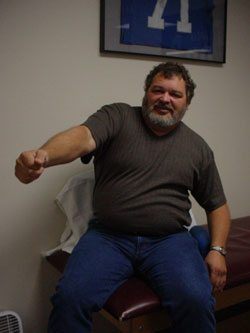
Can’t extend your hip with your glutes? Oh well, I guess you have to use your hamstrings more.
Is your rotator cuff torn? Shoulder stiff? Well, guess what? You are still going to figure out a way to reach up and grab something overhead. Perhaps you will wing your scapula more or contort your spine to accomplish this range of motion, it doesn’t matter exactly what, but you WILL find a way to accomplish this task.
This is even more obvious when we start to talk about those that use their bodies to it’s highest potential, such as athletes. It seems like athletes can adapt to things like fatigue, tightness, and weakness and still develop a motor strategy to perform successfully. Perhaps this is what makes them the elite athlete, the ability to compensate better than everyone else!
[box]We have all probably been guilty of getting caught up in worrying about the quantity of movement instead of the quality of movement when looking for dysfunction. [/box]
Every motion has a group of prime movers and a group of secondary movers. This is important so that if you have dysfunction of one muscle, you can compensate and still function. But don’t forget that sometimes our job is to activate that prime mover and get back to efficient movement patterns, focusing on restoring the quality of the movement.

Sometimes our goal is not to just see IF a person can move from point A to point B, but rather to see HOW a person performs this task. Keep this in the back of your mind with every person you work with and you’ll gain a new appreciation of performance enhancement.




